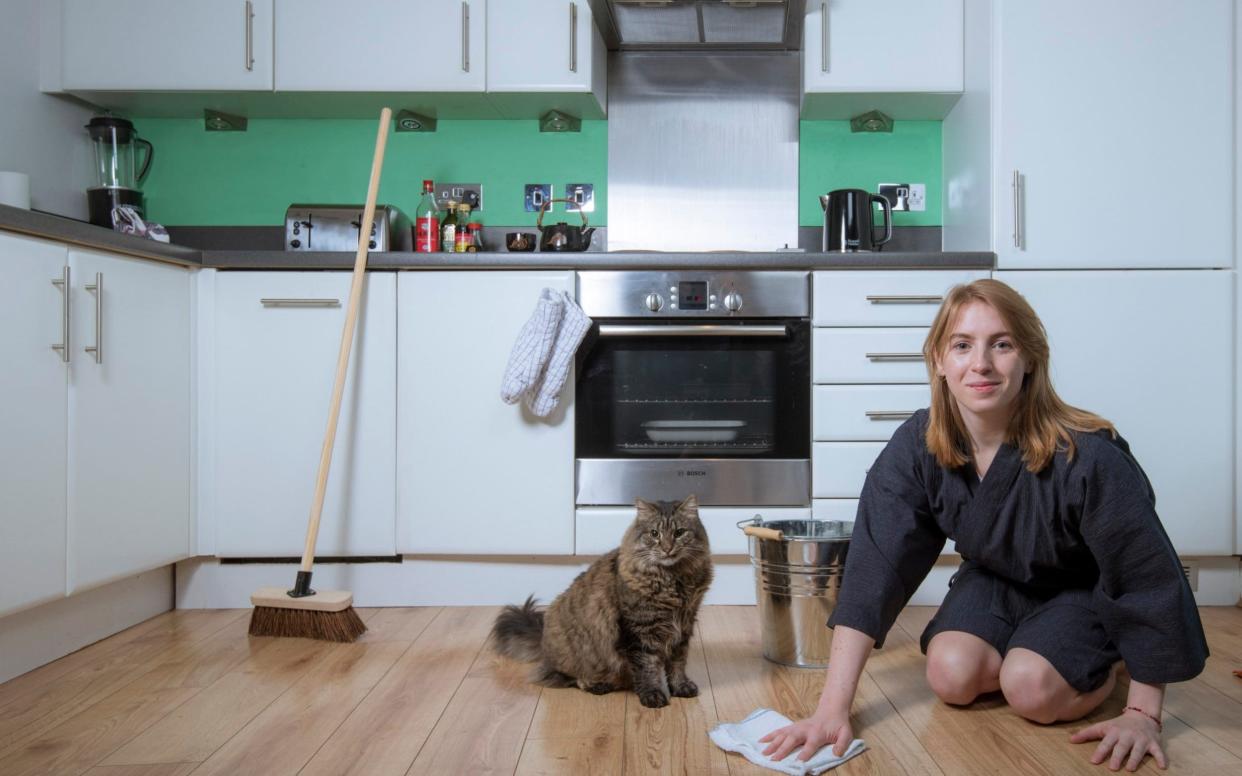Clean Air Day: six everyday household items that pollute your home – and what to do about them

An Englishman’s home is his castle – but could it also be his death trap? According to the World Health Organisation, nearly four million people die prematurely from indoor air pollution every year, with the particles we breathe linked to pneumonia, strokes, lung cancer, and heart disease.
A scary thought – but where does this indoor air pollution come from? Often, the answer is open fire cooking: according to the WHO, a "forgotten three billion" people cook using polluting open fires or simple stoves fuelled by kerosene, biomass and coal. Here in the UK, we tend to be more fortunate: you probably cook with either natural gas or electricity at home. However, that's not to say we're breathing pure air – according to a study commissioned by the Clean Air Day campaign, the air inside our homes is often worse than the outside. Campaigners go as far as to label our homes "toxic boxes".
There are two main types of indoor air pollution: particulate matter and volatile organic compounds. The former are microscopic grains of dust or dirt suspended in the air which can get deep into the lungs, potentially causing cancer. And the latter are gases emitted from certain household products which can cause irritation, headaches, loss of coordination, nausea, and damage to the liver, kidneys, and central nervous system. Again, they're also linked to cancer.
“It’s not that you breathe in bad air and fall over dead the next day," says Orvind Birkenes, founder of Airthings, a manufacturer of air quality monitors. "It takes time. But as we live and have a longer life these things will affect you later in life.
"It’s especially dangerous for children as their lungs develop. Their pulses are higher so anything they breathe in makes its way around their bodies much faster than in adults.”
According to Birkenes, indoor air quality is more of a problem now than it ever has been in the past. This is both due to the fact that houses are better insulated, preventing a lot of air flow in and out, and our penchant for using chemicals which can easily get into the air we breathe.
Cutting down on those chemicals, opening windows, and investing in a few plants are some of the easiest ways to combat indoor air pollution. So too is monitoring your use of certain everyday household items that can release pollution into the air...
Dry cleaned clothes
Dry cleaners tend to use chemicals to get your clothes looking their best, but when you get home these can release chemicals such as trichloroethylene and perchloroethylene, which is classified as a “likely human carcinogen” by the Environmental Protection Agency.
Do a standard wash where you can and make sure you hang any dry-cleaned clothes in a well-ventilated room when you get them home.
Candles and incense
Burning candles or incense can be a great way to make the air smell fresher, but they do the opposite for its quality. Both release a huge amount of particulate matter into your room, though incense is far worse in this regard, releasing up to a hundred times as much as a standard candle.
Still, candles aren’t always great either. Scented candles can release the VOC formaldehyde, which can irritate the lungs and cause headaches.
If you’re desperate to freshen up your air, open a window.

Cheap furniture, carpets, and upholstery
Whether it’s plywood flatpack furniture or carpet, it probably features a glue containing formaldehyde, a chemical which can irritate the lungs, make asthma worse and is a human carcinogen. You can generally smell it when you get new carpets or unbox some furniture, but that formaldehyde can keep leaking out for months or even years, according to one study from Hong Kong.
EU regulation means that all products containing formaldehyde must be labelled as such. Find out more here.
Bleach and non-organic cleaning materials
You know that bleachy smell you get when you’ve been mopping the floors and trying to unclog the drains? Well, what you’re smelling is a dose of VOCs, including acetone, xylene and formaldehyde.
In 2018, a study from the American Lung Association found that people who work as cleaners tend to face a gradual reduction in lung function after reaching 35 years of age, compared with average people. This is thought to be because of the VOCs they breathe in.
“Can you use a microfibre cloth instead of a strong detergent?” asks Birkenes. “Typically that’ll work as well or better, but people are used to using these chemicals.”
The oven
It should come as no surprise that a gas hob which is designed to leak gas out into your kitchen is probably not great for air quality but you should also watch out for your oven, Aga, and stove as well, as anything which burns fuel can release carbon monoxide and nitrogen dioxide, both of which can be fatal.
You should also be careful not to burn your food. Burning your dinner can release particulate matter into the air to extreme levels. A recent study found that cooking a turkey roast can release more pollution into your kitchen you’d find in Central London.
Turn on the extractor fans and open a window while you cook.
The ground
Perhaps the most deadly of the indoor air pollutants is radon gas, which has been repeatedly linked to cancer. It is formed during the radioactive decay of the tiny amounts of uranium found in all soil and rocks. In the UK, you’re most likely to encounter high densities of radon on the South West coast, in Wales, and on the southern border of Northern Ireland, but it is all over the country.
The gas is mostly concentrated at ground level so those living in high rise buildings shouldn’t worry as much as those with basements.
“If you have any cracks in your floors, especially in the basement, those should be sealed,” says Birkenes. “If you have any gaps between the floor and pipes, you should seal them. If you have a basement or crawl space, you should definitely add some ventilation.”
How do you feel about indoor air pollution? Tell us in the comments below.

